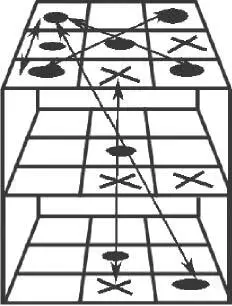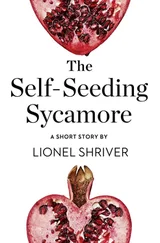Bruce Hood - The Self Illusion
Здесь есть возможность читать онлайн «Bruce Hood - The Self Illusion» весь текст электронной книги совершенно бесплатно (целиком полную версию без сокращений). В некоторых случаях можно слушать аудио, скачать через торрент в формате fb2 и присутствует краткое содержание. ISBN: , Издательство: Constable & Robinson, Жанр: Старинная литература, на английском языке. Описание произведения, (предисловие) а так же отзывы посетителей доступны на портале библиотеки ЛибКат.
- Название:The Self Illusion
- Автор:
- Издательство:Constable & Robinson
- Жанр:
- Год:неизвестен
- ISBN:9781780331379
- Рейтинг книги:5 / 5. Голосов: 1
-
Избранное:Добавить в избранное
- Отзывы:
-
Ваша оценка:
- 100
- 1
- 2
- 3
- 4
- 5
The Self Illusion: краткое содержание, описание и аннотация
Предлагаем к чтению аннотацию, описание, краткое содержание или предисловие (зависит от того, что написал сам автор книги «The Self Illusion»). Если вы не нашли необходимую информацию о книге — напишите в комментариях, мы постараемся отыскать её.
The Self Illusion — читать онлайн бесплатно полную книгу (весь текст) целиком
Ниже представлен текст книги, разбитый по страницам. Система сохранения места последней прочитанной страницы, позволяет с удобством читать онлайн бесплатно книгу «The Self Illusion», без необходимости каждый раз заново искать на чём Вы остановились. Поставьте закладку, и сможете в любой момент перейти на страницу, на которой закончили чтение.
Интервал:
Закладка:
Like some strange alien creature extending tentacles, each neuron is simultaneously connected to up to thousands of other neurons. It is the combined activity of information coming in that determines whether a neuron is active or not. When the sum of this activity reaches a tipping point, the neuron fires, discharging a small chemical electrical signal setting off a chain reaction in its connections. In effect, each neuron is a bit like a microprocessor because it computes the combined activity of all the other neurons it is connected to. It’s a bit like spreading a rumour in a neighbourhood. Some of your neighbouring neurons are excitatory and like good friends, want to help spread the word. Other neurons are inhibitory and basically tell you to shut up. And every time the neuron has such a conversation with its different neighbours or long-distance pals, it remembers the message either to spread the word or be silent so that when the rumour comes round again, the neuron responds with more certainty. This is because the connections between the neurons have become strengthened with repeatedly firing together. In the words of the neurophysiologist Donald Hebb, who discovered this mechanism, synchronized neurons that ‘fire together, wire together’.
These spreading patterns of electrical activity are the language of mental life. They are our thoughts. Whether they are triggered from the outside environment or surface from the depths of our mental world, all thoughts are patterns of activation in the matrix that is our mind. When some event in the external world, such as hearing the sound of music, stimulates our senses, this stimulation is transmitted into a pattern of neuronal impulses that travels to relevant processing areas of the brain, which in turn generate a cascading pattern of activation throughout the brain. In the other direction, whenever we have an internal thought, such as remembering the sound of music, patterns of neural activity similarly cascade across the relevant centres of the brain, reconstructing the memories and thought processes related to this particular experience.
This is because the brain deals with distributed patterns. Imagine that the neural patterns in your brain are like domino patterns in one those amazing demonstrations where you topple one domino and trigger a chain reaction. Only, these dominoes can bounce back up again, waiting for the next time they are pushed over. Some dominoes are easily toppled, whereas others need lots of repeated pushes from multiple sources before they activate and set the pattern propagating.
Now imagine that, rather than there being just one pattern of dominoes, instead there are trillions of different patterns of dominoes overlapping and sharing some of the same excitatory and inhibitory neurons. Not all the dominoes topple because the inter-connectedness of certain clusters of neurons influences the path a neural activation takes. The fact that each neuron can participate in more than one pattern of activity means that the architecture of the brain is parallel. This is a really important point because it reveals a very crucial clue as to why the brain is so powerful. It can do several tasks simultaneously using the same neurons. It’s like the three-dimensional game of tic-tac-toe. Imagine the nought or the cross is like the active or inactive state of a neuron. It can start or stop a line that we will use as a metaphor for a chain of neural activation.
Those chains can spread in many directions. If you place a cross in the bottom corner of the lower layer, it also activates the patterns on the middle and top layers simultaneously. If you only consider the layout on one level, you are likely to lose the game. Rather, to play the game well, you have to think of parallel activation on all levels at the same time. Likewise, activation of neurons produces parallel activation in other connected networks of patterns. That is just as well, because the speed at which neural impulses travel from one neuron to the next in real time has been calculated to be just too slow for the speed at which we know the brain can perform multiple operations. The best explanation for our efficient brain speed at completing tasks is this parallel organization of the neural patterns. 6Our brains really do multitask using the same hardware.

Figure 2: Parallel processing works like three-dimensional tic-tac-toe
With such an arrangement, consider how a lifetime of experiences could operate as a multitude of fingers that topple different dominoes, creating different patterns of activation. In this way, the full diversity of what happens to us during our lives could be stored in the complexity of the neural circuitry as distributed parallel patterns. With billions of neurons, each with up to 10,000 possible connections with neighbouring neurons, that arrangement has the potential to create an almost infinite number of different patterns of connectivity. The mathematics of brain connectivity is mind-boggling. For example, if you just took 500 neurons all connected together so that each neuron could either be in a state of on or off, the total number of different patterns is 2 500, a number that exceeds the estimated total number of atoms in the observable universe. 7Given that there are billions of neurons, you can understand why the human brain is considered the most complicated structure known to man – or, to be more accurate, rather unknown to man.
So this is how the brain basically works. Just like Keanu Reeves’s Neo, you have no direct connection with reality. Everything you experience is processed into patterns of neural activity that form your mental life. You are living in your own Matrix. Wilder Penfield, the famous Canadian neurosurgeon who reported how he could induce dreamlike flashbacks in his conscious patients when he directly stimulated their cortex during operations, most dramatically demonstrated this. He wrote, ‘They were electrical activations of the sequential record of consciousness, a record that had been laid down during the patient’s earlier experience.’ 8He even operated on his own sister and showed that direct stimulation of the cortex triggered motor actions, sensations and thoughts. It’s these patterns of connectivity that encode all the information we process, memories we store and plans that we intend execute. Love, hate, the capital of France, the winners of the last World Cup soccer tournament, how to pitch a tent, how to divide by ten, the plot of your next novel, the taste of chocolate and the smell of oranges – every feeling, bit of knowledge and experience you have or plan to have is possible because of the cascading activation of neurons. Everything we are, can do and will do is nothing more than this. Otherwise we would need ghosts in the brain and, so far, none have been found.
How the Developing Brain Gets Organized
Of course, the human brain is considerably more organized than a chaotic jumble of overlapping circuits. Many areas have been mapped that correspond to different tasks or functions that the brain undertakes. There are brain regions that process information as it arrives from the senses. There are brain regions that plan, initiate and control movements. There are brain regions where personal memories are stored. There are regions that perform calculations. There are centres for emotion, aggression, pleasure and arousal – the fire in the belly of the machine that gets us out of bed in the morning and motivates us to act on the world.
One way to consider how the brain is organized structurally and functionally is to consider it like an onion. At the core of the onion is the brain stem that regulates the basic body functions that keep us alive, such as breathing and blood circulation. Above the brain stem is the midbrain region that controls activity levels such as wakefulness and appetite. The midbrain also governs basic motor control and sensory processing. Arising out of the midbrain is the limbic system, a network that controls emotions and drives such as aggression and sex. This has been called the ‘reptilian brain’ because it controls the sorts of functions we share with lizards and snakes. 9These functions are simply triggered by the sight of a competitor or a potential mate – like a knee-jerk reaction. Deep in the history of our species, we behaved in this automatic way but eventually we evolved higher levels of brain machinery that enabled us to control these reptilian urges. Sitting on top of everything is the cortex, a thin layer on the surface of the brain packed with neurons that support higher-order processing for interpreting the world, generating knowledge and planning actions.
Читать дальшеИнтервал:
Закладка:
Похожие книги на «The Self Illusion»
Представляем Вашему вниманию похожие книги на «The Self Illusion» списком для выбора. Мы отобрали схожую по названию и смыслу литературу в надежде предоставить читателям больше вариантов отыскать новые, интересные, ещё непрочитанные произведения.
Обсуждение, отзывы о книге «The Self Illusion» и просто собственные мнения читателей. Оставьте ваши комментарии, напишите, что Вы думаете о произведении, его смысле или главных героях. Укажите что конкретно понравилось, а что нет, и почему Вы так считаете.












